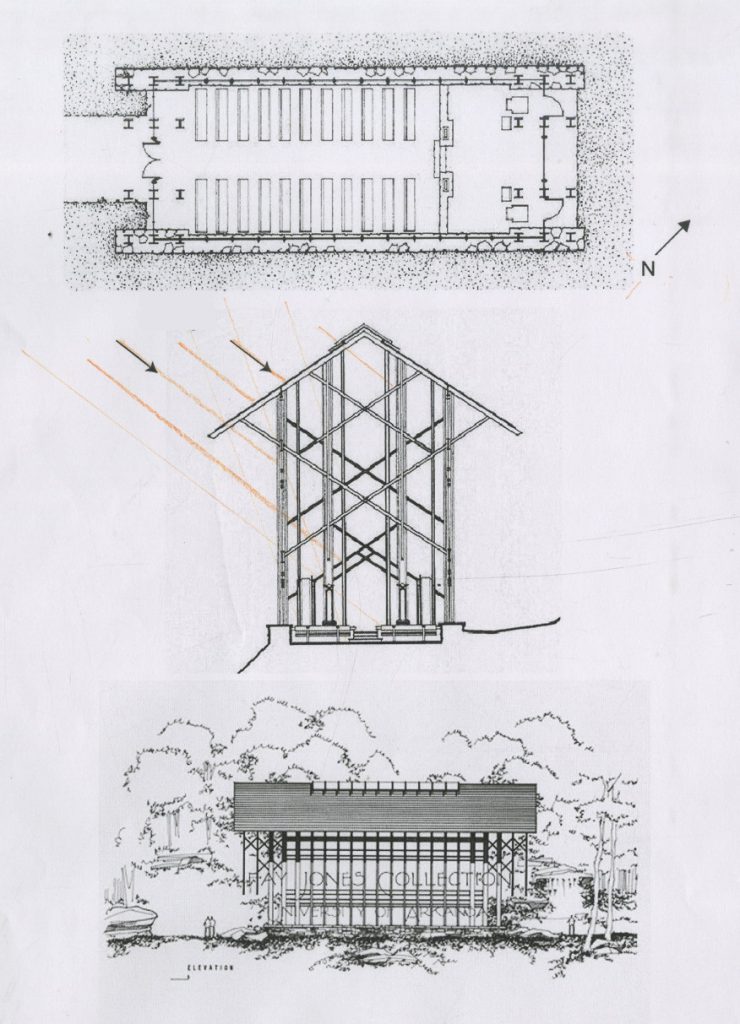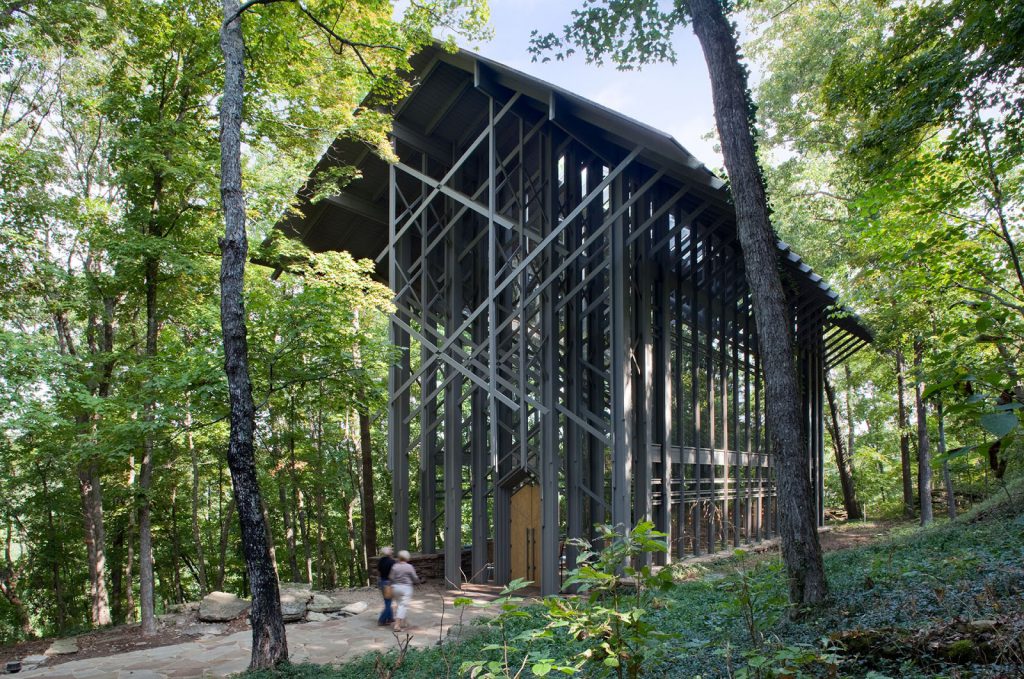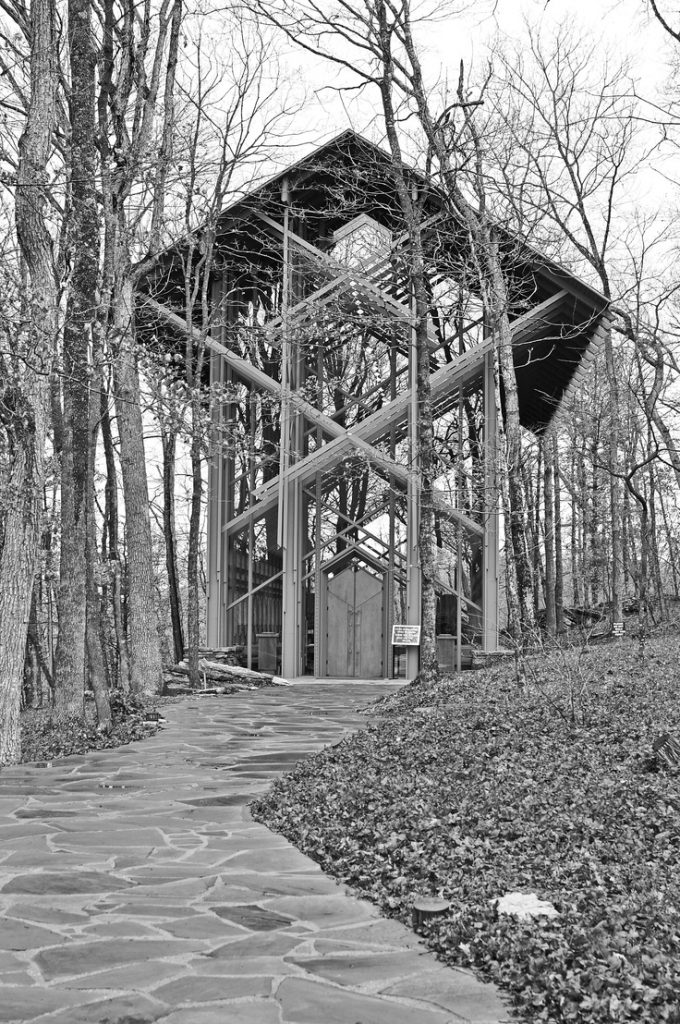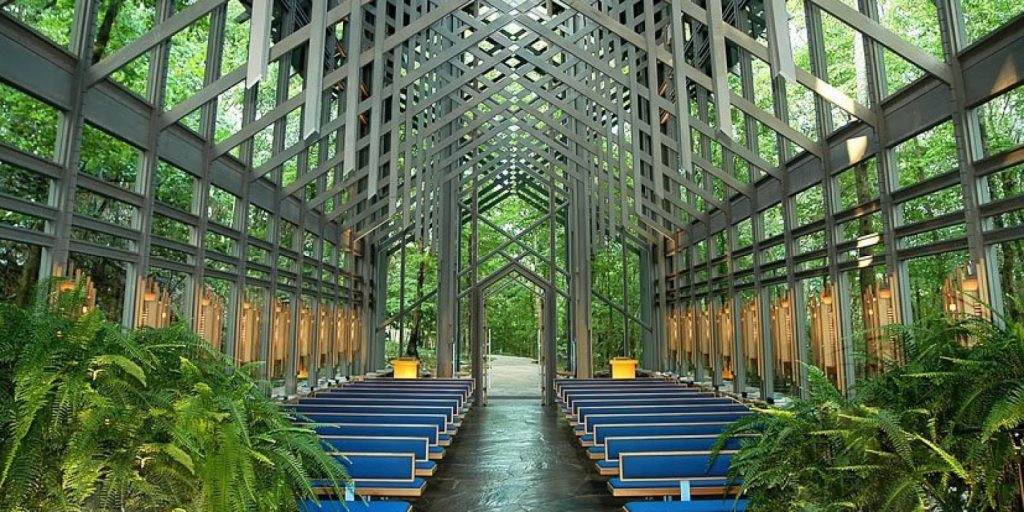“So it is not only the form of elements and their relationship in and to the landscape that is fundamental in site considerations, but shapes and materials, methods of building character, and associative cultural and remembered image evocations are also important. Such is Thorncrown Chapel by Fay Jones in rural Arkansas, an architecture which complements and, in creating a special sense of place, ‘almost’ completes the site. The character of the site dictated the method of construction, by ‘not using anything too big for two men to carry along a narrow hillside path.’ Jones’s use of wooden tensile members in an overhead cross-lattice system holding the structure together, in fragility of the building and its surroundings, as life and nature itself is fragile and special. The rhythmic quality of the structure set against the calm magnitude of nature creates a sense of sacred space: The music of the fleeting the forest is a layering of vertical trunks and raking branches so is the building a canopy of layered and meshlike space. Thorncrown Chapel succeeds on yet another level, that of the symbolic: Using massing reminiscent of rural covered bridges, the image of shelter on the road of life is in keeping with the ecclesiastical understanding of nature. This is where regionalism through site and climate can play a vital role in making architecture not personally idiosyncratic in an ego or alternatively abstract-rule-applied sense, but special in a locally sensitive and relative sense.”
“No es solamente fundamental la forma de los elementos y su relación con el paisaje, sino que también se tuvieron en cuenta consideraciones como las dimensiones de los materiales, los métodos constructivos y una imagen evocadora que tuviese crease una conexión cultural con el lugar. Así es la Capilla de Thorncrown de Fay Jones en la Arkansas rural, una arquitectura que complementa al lugar y crea un significado especial dentro de él. Las propias condiciones de este lugar dictan la forma de construir la capilla como por ejemplo no usando materiales demasiado grandes para que dos hombres no puedan cargarlos a través del camino. El uso de Jones de miembros de tracción de madera es un sistema de celosía transversal que sostienen la cubierta y provocan una fragilidad en el edificio conectándolo con la naturaleza y la vida de alrededor, frágil y especial. El rimto de la estructura contrasta con la calma de la naturaleza y crea un espacio sagrado: la música del bosque es una capa de troncos verticales y ramas horizontales creando una cubierta con forma de rastrillo. Thorncrown Chapel funciona magistralmente más allá de su calidad constructiva llegando al lugar de lo simbólico: la imagen de refugio en el camino de la vida está en consonancia con la comprensión eclesiástica de la naturaleza donde el regionalismo, a través del clima y el lugar, pude desempeñar un papel vital convirtiendo la arquitectura en un objeto no idiosincrásico y ofreciendo una sensibilidad local y un sentido relativo”Paul Heyer. American Architecture: Ideas and Ideologies in the Late Twentieth Century.
Paul Heyer. American Architecture: Ideas and Ideologies in the Late Twentieth Century.










